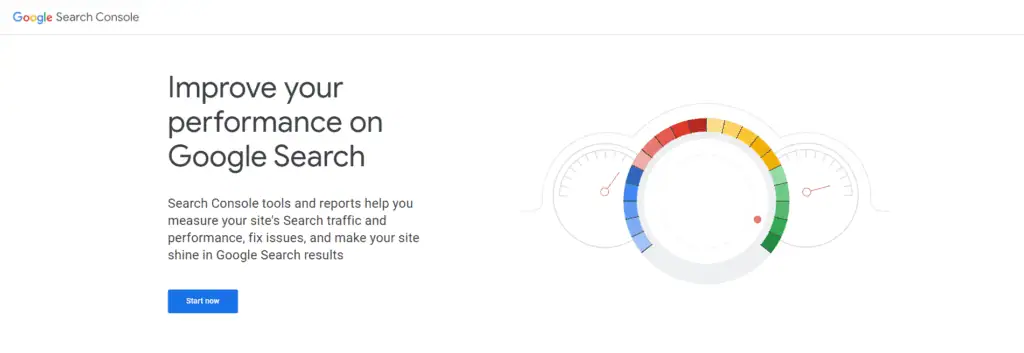Last Updated on 1 week by Christopher Jan Benitez
An SEO content audit is invaluable for enhancing their website’s visibility and ranking on search engines. By systematically reviewing and assessing all the content on your site, you can identify opportunities to improve SEO practices, align content more closely with user intent, and boost your site’s overall performance in search engine results.
This guide will break down the content audit process into a step-by-step guide, making it easier for you to understand and implement. Through content audits, this article aims to guide readers on improving SEO practices by providing insights into the frequency of conducting audits, analyzing website content performance, and the benefits of such audits, including SEO optimization.
Let’s begin!
Understanding SEO Content Audit
Conducting a content audit is crucial in improving your website’s SEO performance.
A content audit is a process of systematically inventorying and evaluating your website’s currently published content. It helps you identify and address SEO issues and opportunities. To ensure a comprehensive audit, it’s essential to analyze not just individual pieces of content but the entire website to ensure overall SEO health.
A content audit involves analyzing your website’s content to determine its relevance, quality, and effectiveness. It helps you identify underperforming content that needs improvement or deletion. You can also identify gaps that need to be filled with new content.
SEO content audit is essential for understanding your website’s performance and making actionable improvements. It provides insights to enhance user experience, SEO, and conversions.
By conducting a content audit, you can optimize your website’s content to rank higher in search engine results.
To conduct a content audit, you need to follow a systematic process. This process involves asking questions to figure out what, if anything, is holding your content back and then making improvements in those areas.
You can use different content audit tools, including Screaming Frog, Google Analytics, and Ahrefs.
Importance of a Content Audit

A content audit is an essential process that helps you evaluate your website’s existing content and identify areas for improvement.
The primary goal of a content audit is to optimize your website’s content for better traffic, performance, ranking, conversions, engagement, user experience, and bounce rate.
Conducting a content audit can help you identify your content’s strengths and weaknesses and develop a plan to improve it. The audit will also help you identify underperforming content, which you can delete, redirect, or improve.
This process will help you optimize your website’s content for better user engagement, which can lead to higher conversions and increased revenue.
One of the most significant benefits of a content audit is that it can help you identify SEO opportunities. Additionally, by enhancing your content’s search engine visibility, a content audit significantly improves your website’s presence in search engine results. This is achieved by analyzing and optimizing the on-page elements that are crucial for search engine performance.
By analyzing your website’s content, you can identify keywords you are not currently targeting and develop a plan to optimize your content.
This process will help you improve your website’s ranking on search engines, which can lead to increased traffic and revenue.
Another essential benefit of a content audit is that it can help you improve the user experience of your website.
By analyzing your website’s content, you can identify confusing or difficult-to-navigate areas, leading to a high bounce rate.
By improving the user experience of your website, you can increase user engagement, which can lead to higher conversions and increased revenue.
Preparing for a Content Audit
Before conducting a content audit, preparing yourself and your team for the task is essential.
A content audit can be time-consuming, but it’s essential for improving your website’s SEO and content marketing strategy. Here are some steps to take before starting your audit:
Define Your Goals
First, you must define your goals for the content audit. What do you hope to achieve by conducting the audit?
Are you looking to improve your website’s search engine rankings? Do you want to identify gaps in your content strategy?
Defining your goals will help you stay focused and ensure your audit is effective.
Organize Your Content
It’s essential to clearly understand what content you have on your website before starting the audit.
Make a list of all the pages on your website, including their URLs, and categorize them by type (e.g., blog posts, product pages, landing pages).
This will help you stay organized and identify any gaps or redundancies in your content.
Review Your Content Strategy
Take a look at your content strategy and ensure that it aligns with your business goals.
Is your content strategy focused on driving traffic to your website? Are you creating content that is engaging and informative for your target audience?
Reviewing your content strategy will help you identify any areas that need improvement and ensure that your content aligns with your overall business objectives.
Assemble Your Team
A content audit can be daunting, so it’s essential to assemble a team to help you. This could include writers, editors, designers, and developers.
Before starting the audit, make sure everyone is clear on their roles and responsibilities and on the same page.
Tools for Content Audit
When it comes to conducting a content audit, having the right tools can make all the difference. We recommend using a specific site audit tool for a comprehensive site audit that identifies technical SEO issues. Here are some of the most commonly used tools for content audit:
Google Analytics

Google Analytics is a free web analytics service that provides insights into website traffic and user behavior.
It can be used to identify high-performing pages, track user engagement, and monitor website traffic.
By analyzing the data provided by Google Analytics, you can identify which pages on your website are performing well and which ones need improvement.
Ahrefs

Ahrefs is an SEO tool that provides insights into backlinks, keywords, and content.
It can be used to identify which pages on your website are receiving the most traffic, which keywords are driving traffic to your site, and which backlinks are contributing to your site’s authority.
By using Ahrefs, you can identify which pages on your website need improvement and which ones are performing well.
Google Search Console

Google Search Console is a free tool provided by Google that helps website owners monitor and maintain their site’s presence in Google search results.
It can be used to identify crawl errors, monitor website traffic, and track keyword rankings.
By using Google Search Console, you can identify which pages on your website are performing well in search results and which ones need improvement.
Screaming Frog

Screaming Frog is a website crawler that can be used to identify technical SEO issues on your website.
It can be used to identify broken links, duplicate content, and missing meta tags.
By using Screaming Frog, you can identify technical issues that are preventing your website from performing well in search results.
SEMrush

SEMrush is an all-in-one marketing toolkit that provides insights into SEO, PPC, social media, and content marketing.
It can be used to identify which pages on your website are performing well in search results, track keyword rankings, and analyze competitor data.
By using SEMrush, you can identify which pages on your website need improvement and which ones are performing well.
Audit Process Step by Step
Performing a content audit is a critical step in any SEO strategy. It helps you identify what content is performing well, what isn’t, and what needs improvement. Here is a step-by-step guide to help you conduct an effective content audit:
1. Inventory your content
Start by creating a list of all your website content, including blog posts, landing pages, product descriptions, and other content. It’s crucial to evaluate all web pages for consistency and SEO performance, as maintaining a consistent tone and quality across various types of web pages, such as landing pages, establishes a strong brand perception and enhances content marketing efforts.
You can use tools like Screaming Frog or Ahrefs to crawl your website and extract a list of all the URLs.
2. Define your criteria
Once you have an inventory of your content, you need to define the criteria for your audit.
This includes factors like traffic, engagement, conversions, and bounce rate. You should also consider technical SEO factors like page speed, mobile-friendliness, and accessibility.
3. Collect data points
After defining your criteria, you need to collect data points for each piece of content.
This includes metrics like page views, time on page, bounce rate, and conversion rate. You can collect this data using tools like Google Analytics or Ahrefs.
4. Review the data
Once you have collected the data, review it to identify patterns and trends.
Look for content that is performing well and content that needs improvement. You should also identify any technical SEO issues that need to be addressed.
5. Make improvements
Based on your review, make improvements to your content.
This may include updating outdated information, optimizing for SEO, improving design, or making content more accessible.
6. Re-crawl your website
After making improvements, re-crawl your website to ensure all technical SEO issues have been addressed.
This will help ensure that your website is optimized for search engines and user experience.
Analyzing Website Content

Analyzing your website content is a crucial step in conducting a content audit. This involves evaluating the quality of your content, identifying areas for improvement, and determining which content should be kept, updated, or deleted.
One way to analyze your website content is to review the URLs of your pages and screens. This can help you identify duplicate content, pages with thin or low-quality content, and pages without content.
You can use tools like Ahrefs or SEMrush to export data from Google Search Console and merge it into a content audit template. This will help you comprehensively view your website’s performance and identify areas that need improvement.
Another essential factor to consider when analyzing website content is the content type.
You should evaluate your website’s different types of content, including blog posts, landing pages, product descriptions, and videos.
For each content type, you should assess the content’s quality, relevance, and engagement. This can help you identify areas to improve or create new content.
Word count is another crucial factor to consider when analyzing website content.
You should evaluate the length of your content and determine whether it is too short or too long.
Blog posts should generally be at least 300 words while landing pages and product descriptions should be more detailed and informative.
When analyzing website content, it’s also essential to consider the author of the content.
You should evaluate the expertise and credibility of the author and ensure that the content is accurate and up-to-date. This can help you build trust with your audience and establish your website as a reliable source of information.
Evaluating SEO Elements

When conducting an SEO content audit, evaluating various elements that contribute to your website’s search engine rankings is important. Here are some key elements to consider:
Crafting compelling meta descriptions is crucial for improving search engine visibility and user engagement, as they play a significant role in on-page SEO optimizations.
Titles and Meta Descriptions
Your page titles and meta descriptions are critical for search engines and users. They should accurately describe each page’s content and include your target keywords.
Make sure they are unique and compelling to encourage clicks from search results.
On-Page SEO
On-page SEO refers to the optimization of individual pages on your website.
This includes optimizing your content for target keywords, using header tags to structure your content, and ensuring that your images are correctly optimized with alt tags.
Internal Links
Internal links are links from one page on your website to another.
They help search engines understand your website’s structure and can improve the user experience by providing additional context and information.
Backlinks
Backlinks are links from other websites to your website. They are an essential factor in search engine rankings and can help improve your website’s authority and visibility.
To improve your backlinks, make sure to identify any low-quality or spammy backlinks and disavow them.
Duplicate Content
Duplicate content can harm your search engine rankings and confuse users. Use tools like Copyscape to identify any duplicate content on your website and take steps to remove or consolidate it.
Page Speed
Page speed is an important factor in both search engine rankings and user experience. Use tools like Google PageSpeed Insights to identify any issues with your website’s loading speed and take steps to improve it.
Core Web Vitals
Core Web Vitals are a set of metrics that measure the user experience of a website. They include factors like loading speed, interactivity, and visual stability.
Make sure your website meets these standards to improve your search engine rankings and user experience.
Identifying Content Opportunities
When conducting a content audit for your website, one of the key goals is to identify content opportunities. These are gaps in your current content that you can fill with new content to improve your website’s overall performance.
Here are some tips for identifying content opportunities:
- Analyze your organic traffic metrics – Look at the pages on your website that are driving the most organic traffic. Are there any topics related to those pages that you haven’t covered yet? If so, consider creating new content around those topics to capture more traffic.
- Use search engines to your advantage – Use search engines to identify popular topics related to your niche. Look for gaps in the search results where no high-quality resources are available. You can create content around these topics to fill the gap and potentially capture a large audience.
- Audit your content – Look at your existing content and identify gaps or outdated content. Consider updating or repurposing this content to create more valuable resources for your audience.
- Consult relevant guides and resources – Look for relevant guides and resources created by other marketers in your niche. Identify topics they haven’t covered yet and create content around them.
Dealing with Underperforming Content

When conducting an SEO content audit, it’s important to identify underperforming content. This includes content that is not generating traffic, not ranking well on search engines, or not converting visitors into customers.
Once you’ve identified underperforming content, you have several options to address it.
Delete
If the content is low quality, outdated, or irrelevant, it’s best to delete it. This will prevent it from dragging down your overall website performance and improve your website’s credibility.
However, before deleting any content, make sure to redirect any backlinks to other relevant pages on your website.
Consolidate
If you have multiple pages with similar content, consider consolidating them into one page. This will help to eliminate duplicate content and improve the overall quality of your website.
Make sure to redirect any backlinks to the new consolidated page.
Repurpose
If the content has potential but is not performing well, consider repurposing it. This could involve updating the content with new information, adding visuals, or changing the format.
For example, turning a blog post into a video or infographic can help to attract new audiences.
Creating a Content Audit Spreadsheet
A content audit spreadsheet is crucial for tracking and analyzing your content. It allows you to record all the content on your website, identify areas that need improvement, and plan your content strategy.
Here are some steps to help you create a content audit spreadsheet:
- Start with a template – You can find many content audit templates online to use as a starting point. These templates usually include columns for the title, URL, type of content, date published, and other relevant information.
- Customize the template – Once you have a template, you can customize it to fit your needs. You may want to add additional columns for metrics such as page views, bounce rate, and conversion rate. You can also add filters and sorting options to make it easier to analyze your data.
- Populate the spreadsheet – The next step is to populate the spreadsheet with your content. You can use tools such as Screaming Frog or Ahrefs to crawl your website and extract all the URLs.You can then copy and paste the URLs into your spreadsheet and fill in the other columns.
- Analyze the data – Once you have all your content in the spreadsheet, you can start analyzing the data. Look for patterns and trends in your data. Identify which pages are performing well and which ones need improvement. Use this information to plan your content strategy.
Monitoring and Updating Content

Regularly monitoring and updating your content is essential to maintain its relevance and effectiveness. Here are some factors to consider when auditing and updating your content:
User Experience
User experience is critical to the success of your website. Ensure your content is easy to read and understand, and that it provides value to your audience.
Use headings, bullet points, and images to break up large blocks of text and make your content more digestible.
Rankings
Your content’s rankings in search engine results pages (SERPs) can significantly impact your website’s traffic and visibility.
Use tools like SEMrush or Ahrefs to track your rankings and identify opportunities for improvement.
Social Shares
Social shares can help increase your content’s visibility and reach a wider audience.
Encourage social sharing by including social media buttons on your website and creating shareable content that resonates with your audience.
Comments and Reviews
Comments and reviews can provide valuable feedback and insights into your content’s effectiveness.
Monitor comments and reviews regularly and use them to identify areas for improvement.
Expertise
Demonstrate your expertise by creating high-quality, informative content that provides value to your audience.
Use credible sources and include statistics and data to back up your claims.
Frequently Asked Questions
Conducting a website content audit for SEO purposes involves evaluating your site’s existing content and identifying areas for improvement. You should begin by creating a list of all pages on your site and analyzing their performance metrics, such as traffic, bounce rate, and engagement. This will help you determine which pages are performing well and which ones need improvement.
The key elements of a successful content audit include setting clear goals, identifying your target audience, creating a content inventory, analyzing content performance metrics, and creating an action plan for improvement. Following these steps ensures that your content audit is thorough and effective in improving your website’s SEO performance.
Several tools, including Google Analytics, SEMrush, Ahrefs, and Screaming Frog, can be used to conduct a content audit. These tools can help you analyze your website’s performance metrics, identify areas for improvement, and track your progress over time.
A content audit can improve website SEO performance by identifying areas for improvement, such as outdated or irrelevant content, duplicate content, and missing metadata. Addressing these issues can improve your website’s search engine rankings, increase organic traffic, and improve user engagement.
Conducting a content audit for SEO can improve website performance metrics, increase organic traffic, improve user engagement, and boost search engine rankings. By identifying areas for improvement and implementing changes, you can ensure that your website is optimized for maximum performance.
Common mistakes to avoid when conducting a content audit include failing to set clear goals. Another mistake is neglecting to identify your target audience. You should also avoid overlooking important performance metrics and failing to create an action plan for improvement. By avoiding these mistakes and following best practices, you can ensure that your content audit effectively improves your website’s SEO performance.
Let Me Audit Your Website Content For You!
The SEO content auditing process can be overwhelming for business owners with a lot on their hands. In that case, hire me to conduct a comprehensive audit of your website content and identify opportunities and areas of improvement we can perform to increase its organic search performance.

